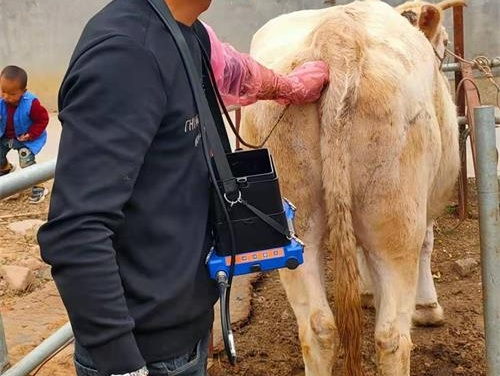Performing Veterinary ultrasounds is a critical skill for modern livestock farmers and veterinarians. It requires specialized training, technical knowledge, and hands-on experience to ensure accurate diagnostics and animal welfare. Whether you're monitoring pregnancies, detecting health issues, or managing herd health, mastering ultrasound techniques is indispensable.

1. Understanding Veterinary Ultrasound Basics
Before operating an ultrasound machine, it’s essential to grasp the fundamentals. Ultrasound imaging uses high-frequency sound waves to create real-time images of internal structures. For large animals like cattle, horses, and sheep, this technology helps assess reproductive health, detect tumors, or evaluate organ conditions. Familiarity with terms like "echogenicity," "Doppler imaging," and "B-mode scanning" is crucial for interpreting results correctly.
2. Specialized Training Programs
Formal training is a must. Many agricultural universities and veterinary schools offer courses in veterinary ultrasonography. These programs cover:
- Anatomy and Physiology: Recognizing normal vs. abnormal structures in different species.
- Machine Operation: Adjusting settings like depth, gain, and focus for optimal imaging.
- Hands-On Practice: Scanning live animals under supervision to build confidence.
Online certifications are also available, but in-person training is highly recommended for mastering probe handling and image interpretation.

3. Key Skills for Effective Scanning
#a) Probe Handling and Positioning
Large animals require specific techniques due to their size and muscle density. For instance:
- Cattle: A rectal approach is common for reproductive scans, requiring steady hands to avoid discomfort.
- Horses: Limb ultrasounds demand precise probe angles to visualize tendons and ligaments.
Practice is vital—improper positioning can lead to misdiagnosis.
#b) Image Interpretation
Distinguishing between a viable fetus and a cyst or identifying liver abnormalities takes experience. Start with normal scans to build a reference library before tackling pathologies.
#c) Equipment Maintenance
High-quality machines, like those from BXL, are built for durability in farm environments. Regular cleaning, probe care, and software updates ensure longevity.
4. Challenges in Field Applications
Farm settings present unique hurdles:
- Animal Movement: Sedation isn’t always an option; patience and restraint techniques are key.
- Environmental Factors: Dust, moisture, and temperature can affect machine performance.
- Time Management: Scanning dozens of animals efficiently requires speed without sacrificing accuracy.

5. Advancing Your Expertise
Continuing education keeps skills sharp. Attend workshops, follow journals like *Veterinary Radiology & Ultrasound*, and network with peers. Advanced training in 3D imaging or echocardiography can expand diagnostic capabilities.
Conclusion
Mastering veterinary ultrasounds combines education, practice, and the right tools. Whether you’re a farmer monitoring pregnancies or a vet diagnosing ailments, investing in training ensures better herd management and animal health. With reliable equipment and refined skills, ultrasound technology becomes a cornerstone of modern livestock care.
tags:
Text link:https://www.bxlultrasound.com/ns/792.html


